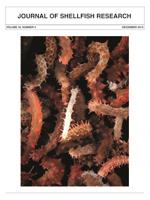The impact of the dinoflagellate Alexandrium catenella on the early development of the Pacific oyster Crassostrea gigas was investigated by exposing embryos or larvae to different concentrations of A. catenella. Embryonic and newly hatched larval developments were inhibited after exposure to A. catenella at a concentration of 100 cells/mL. In particular, the trochophore larvae showed a retarded metamorphosis to the D-shaped larval stage, and could not finish the hatching process at concentrations exceeding 1,000 cells/mL. Adverse effects of A. catenella on the development of feeding larvae and settlement rate were shown at concentrations of more than 300 cells/mL. The survival rate of embryos and trochophore larvae were sensitive to A. catenella and it decreased significantly at a concentration of 300 cells/mL. The survival rate of D-shaped larvae was reduced significantly at a concentration of 600 cells/mL, whereas the umbo larvae and eye-spot larvae were affected significantly at a high concentration of 2,000 cells/mL only. The results obtained in this study demonstrate that A. catenella severely affects the early stage of development of C. gigas, but the effects of harmful algae on early development of oysters are varied during different stages.
How to translate text using browser tools
1 December 2013
Effects of the Dinoflagellate Alexandrium catenella on the Early Development of the Pacific Oyster Crassostrea gigas
Cuimin Mu,
Qi Li
ACCESS THE FULL ARTICLE

Journal of Shellfish Research
Vol. 32 • No. 3
December 2013
Vol. 32 • No. 3
December 2013
Alexandrium catenella
Crassostrea gigas
dinoflagellate
early development
oyster
survival rate




